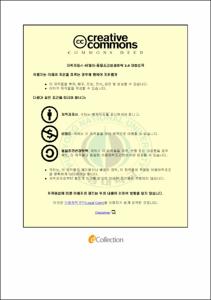Attenuation of Neuroinflammatory Effects by Hippocampus KudaBleeler Derived Compounds, SE-1 and SE-2 via MAPK and NF-κB Signaling Pathways
- Abstract
- Inflammation has recently been implicated as a critical mechanism responsible for neurodegenerative diseases. Microglial cells and macrophages are responsible for mediating inflammatory responses related to neurodegeneration. The two compounds isolated from sea horse Hippocampus KudaBleeler; 1-(5-bromo-2-hydroxy-4-methoxyphenyl) ethanone [SE-1] and 1-(2-hydroxy-4-methoxyphenyl) ethanone [SE-2] were studied as agents to suppress lipopolysaccharide (LPS) mediated inflammatory responses in cultured BV-2 microglial cells and RAW264.7 macrophage cells. SE-1 and SE-2 significantly attenuated LPS induced release of inflammatory products such as nitric oxide, prostaglandin E2, reactive oxygen species (ROS), tumor necrosis factor-α (TNF-α), interleukin-1β (IL-1β) and interleukin-6 (IL-6). The compounds also down regulated the protein and gene expression levels of inducible nitric oxide synthase (iNOS), cyclooxygenase-2 (COX-2), TNF-α, IL-1β and IL-6 in both cell lines. Molecular signaling pathway studies showed that SE-1 and SE-2 inhibited the nuclear translocation of nuclear factor-κB (NF-κB) p65 and p50 subunits by attenuating the IKKα/β (IκB kinase α/β) and IκBα. Also SE-1 and SE-2 suppressed the phosphorylation of MAPK molecules; JNK and p38 in both cell lines. These results suggest the potential in vitro anti-inflammatory activity of SE-1 and SE-2, which inhibited the LPS, stimulated inflammatory responses in BV-2and RAW264.7cells via suppressing MAPK and NF-κB signaling pathways.
- Issued Date
- 2010
- Awarded Date
- 2010. 8
- Type
- Dissertation
- Publisher
- 부경대학교
- Affiliation
- 부경대학교 화학과
- Department
- 대학원 화학과
- Advisor
- 김세권
- Table Of Contents
- 1. Introduction 1
1.1. Inflammation; beneficial or detrimental 1
1.2. Inflammatory responses in neuro-degenaration 2
1.3. Role of Macrophage cells in inflammation 2
1.4. Microglial cells; a friend or foe 3
1.5. NF-κB signaling pathway mediated inflammatory responses 6
1.6. MAPK signaling pathway in inflammation 7
1.7. Hydroxyacetophenone compounds SE1and SE2 as inhibitors of neuro-inflammatory response 7
Research objectives 11
2. Materials and methods 12
2.1. Materials 12
2.2. Cell culture and cell viability assay 12
2.3. Nitric oxide production assay 12
2.4. Enzyme immuno assay of PGE2 13
2.5. Enzyme immuno assay of TNF-α, IL-1β and IL-6 13
2.6. Determination reactive oxygen species (ROS) production by FACS 14
2.7. Reverse transcription (RT)-PCR analysis 14
2.8. Western blot analysis 14
2.9. Statistical analysis 16
3. Results and discussion 17
3.1. Cyto-compatibility of the compounds SE1 and SE2 17
3.2. SE1 and SE2 inhibited the LPS induced NO production in BV-2 and RAW264.7 cells 19
3.3. SE1 and SE2 inhibited the LPS induced iNOS expression in BV-2 and RAW264.7 cells 22
3.4. SE1 and SE2 inhibited the LPS induced PGE2 production in BV-2 and RAW264.7 cells 25
3.5. SE1 and SE2 inhibited the LPS induced COX-2 expression in BV-2 and RAW264.7 cells 28
3.6. SE1 and SE2 inhibited the LPS induced pro-inflammatory cytokines in BV-2 and RAW264.7 cells 31
3.7. SE1 and SE2 inhibited the LPS induced ROS production in BV-2 and RAW264.7 cells 38
3.8. SE1 and SE2 supressed the MAPK molecules in LPS challanged BV-2 and RAW264.7 cells 41
3.9. SE1 and SE2 blocked the NF-κB activation in LPS challanged BV-2 and RAW264.7 cells 46
4. Summary 49
- Degree
- Master
- Files in This Item:
-
-
Download
 Attenuation of Neuroinflammatory Effects by Hippocampus KudaBleeler Derived Compounds, SE-1 and SE-2.pdf
기타 데이터 / 2.56 MB / Adobe PDF
Attenuation of Neuroinflammatory Effects by Hippocampus KudaBleeler Derived Compounds, SE-1 and SE-2.pdf
기타 데이터 / 2.56 MB / Adobe PDF
-
Items in Repository are protected by copyright, with all rights reserved, unless otherwise indicated.